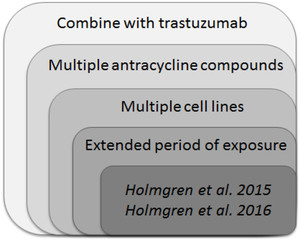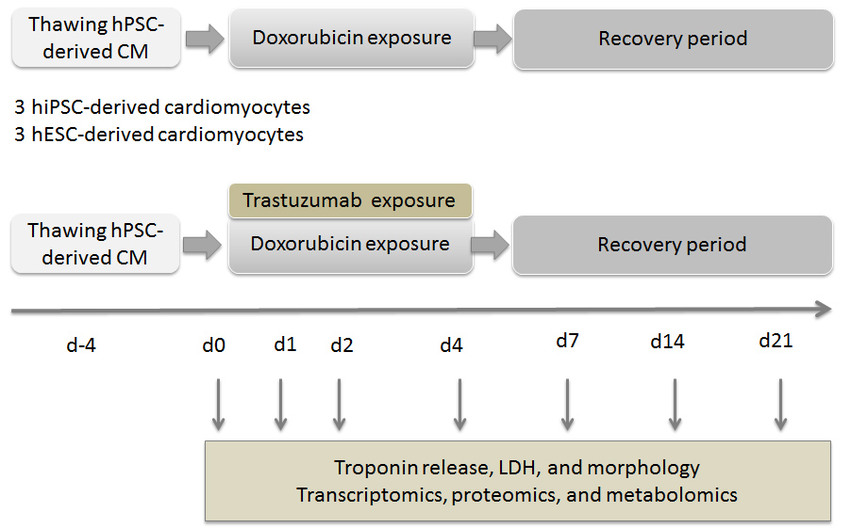Jane Synnergren
School of Bioscience

This project is one of the three subprojects within the synergy project BioMine - Data-mining for biomarker discovery, selection, and validation. In this subproject we investigate how large-scale biomolecular data can be used to identify specific biomarkers for toxicity testing. The project is performed in close collaboration between the University of Skövde, AstraZeneca Gothenburg and Takara Bio Europe.
In recent years the pharmaceutical industry has experienced a high proportion of drug attritions at late time points in the development process, contributing to the high costs for bringing new drugs to the market. Thus, there is an urgent need for more predictive model systems for toxicity assays that fulfill the needs from the pharmaceutical industries and that help to avoid costly late-stage attrition of drug candidates and bring safer products to the market.
This subproject make use of induced pluripotent stem cell (iPSC)-technology as ground breaking novel opportunities towards the development of personalized medicine. Individual patients may respond differently to the same pharmaceutical treatments with respect to e.g. dose, response of treatment and side effects. These differences are not addressed in currently available test systems.
An attractive toxicity test system for pharmaceutical safety assessment should at minimum demonstrate rapid throughput, and high predictive rate with few false positive results. These requirements are not sufficiently met by the approaches used today, which most often are based on animal models, and thus, not directly translatable to the human situation. Human PSC-based assays have the potential to fulfill the above-mentioned criteria, since it is possible to expand and differentiate these cells into large amounts amenable to high-throughput screening. Their human phenotype offers higher clinical relevance compared to non-human or transformed cell lines, which currently are being used for toxicity testing.

Figure 1: The project builds on project results from previous publications but in this project the experimental design is extended to include longer time of exposure, more cell lines and more substances.
To monitor the cellular effects of drug exposure and improve the toxicology assessment, there is a high demand of reliable biomarkers for assessment of toxic responses. In this regard, development of new techniques for high-throughput measurement of different types of biological material has revolutionized the research field. These new technologies are used for generation of large-scale data for the identification of biomarkers in the context of toxicology assaying. Of specific interest are biomarkers for prediction of cardiac- and hepatic toxicity caused by pharmaceutical compounds.
In the project, cells are exposed to e.g. doxorubicin and other antracycline drugs that are used as chemotherapy, to model the toxic response in human stem cell-derived cardiomyocytes (hiPSC-CM).

Figure 2: Experimental setup to generate omics data for identification of cardiac toxicity biomarkers.
Drug-induced cardiotoxicity from antracycline therapy affects a subpopulation of the treated patients, and possibilities to predict the propensity for a patient to suffer from this severe side effect would be of great value when deciding appropriate chemotherapy treatment for the patients. Test systems for hepatotoxicity based on hiPSC-derived hepatocytes will also be developed during the course of this subproject.




